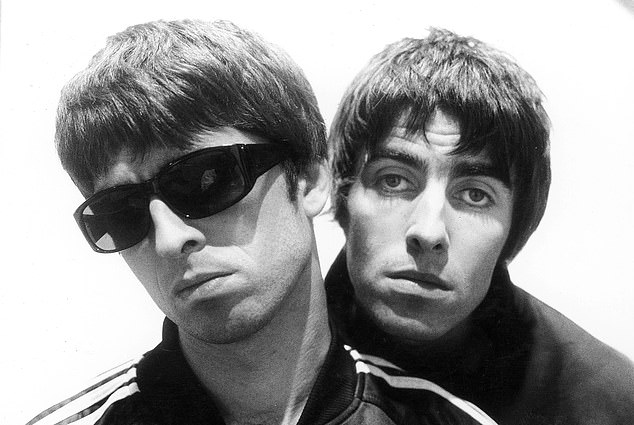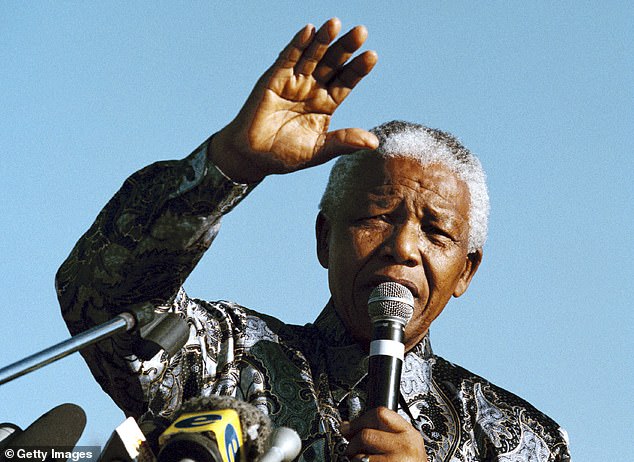It was the year Nelson Mandela became South African president, the Channel Tunnel opened and Oasis released their first album, Definitely Maybe.
And across Britain in 1994 thousand of couples were getting married – in what is the worst 12 months for matrimonial longevity on record.
New statistics released today show how people who tied the knot 31 years ago are more likely to now be divorced than any couple who wed before or since.
Figures from the Office for National Statistics show that more than four in 10 (42 per cent) marriages in 1994 lasted less than 25 years.
Almost a quarter (24.7 per cent) of them lasted less than 10 years and more than one in 10 (11 per cent) failed to last even five years.
In contrast the figures for years up to 2023 show fewer than 17 per cent of couples who married in 2013 were divorced 10 years later and fewer than 6 per cent after five.
However it pales in comparison with 1963, the first year for which figures are available, when just 1.5 per cent of married couples were divorced after five years and 8 per cent after 10 years.


It was the year Nelson Mandela (above) became South African president, the Channel Tunnel opened and Oasis (Liam and Noel Gallagher, pictured top) released their first album, Definitely Maybe.
The ONS data shows have divorce rates have plummeted since their peak in the early 1990s.
The ONS also noted: ‘In 1994, opposite-sex couples married earlier than in more recent years, with the median age at marriage of opposite-sex partners being 29.6 years for men and 27.6 years for women.
‘At that time, just over half (59.6 per cent) of opposite-sex couples lived together before getting married.
‘By 2022, opposite-sex couples were marrying later, with the median age at marriage of opposite-sex partners rising to 34.8 years for men and 32.9 years for women.
‘The proportion of opposite-sex couples living together before getting married had also increased, rising to 90 per cent.’
At the same time there has been a major fall in the number of people getting married at all.
The rate was 36.3 per 1,000 men and 30.6 per 1,000 women in 1994, but had fallen to 20.3 and per 1,000 respectively by 2022.
In 1971 the figure was 80.3 per 1,000 for men and 60.5 per 1,000 for women.

A Eurostar Channel tunnel train on its Royal Inaugural Journey to Paris with Queen Elizabeth and the Duke of Edinburgh onboard in 1994
Data released separately by the ONS yesterday showed the number of births in England and Wales rose last year, the first increase since 2021, helped by a ‘notable’ jump in babies born to fathers aged 60 and over.
Some 594,677 live births occurred in 2024, up 0.6 per cent from 591,072 in 2023, according to the Office for National Statistics (ONS).
Births remain at historically low levels, with 2024 ranking as the third lowest total since 1977.
But the small rise means the broad downwards trend seen in recent years has, for the time being, come to a halt.
The latest increase in births is not reflected across all parts of England, with five regions seeing a year-on-year fall, including a drop of 1.4 per cent in the North East.
The largest jumps were in West Midlands, up 3.4 per cent, and London, up 1.8per cent.
While England overall saw a rise of 0.7 per cent in live births, Wales experienced a fall of 2.0per cent.
There was a ‘notable increase’ in live births to fathers aged 60 and over, the ONS said.
The number jumped by 14.2per cent, from 942 births in 2023 to 1,076 in 2024.
By contrast, births to young mothers and fathers fell, continuing a long-term trend that has seen the average age of parents rise steadily for the last 50 years.
Babies born to mothers under the age of 20 dropped year on year by 4.6 per cent, with a 2.4 per cent fall for those aged 20 to 24, while those born to fathers under 20 fell by 0.5 per cent and 3.2 per cent respectively.











